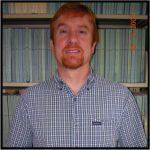Thomas Blum
Professor
Physics
Research Interests
I study Quantum Chromodynamics(QCD), the fundamental theory of the strong force. This force binds quarks and gluons together to form protons and neutrons, the fundamental building blocks of matter that make up our world. In principle, QCD describes all of nuclear physics, in the sense that Quantum Electrodynamics describes solid state physics. It is also important to particle physics because most of the particles detected in high-energy collider experiments like those at the Large Hadron Collider at CERN are hadrons, the bound states of quarks and gluons.
QCD is a relativistic quantum field theory which describes the interactions of the gluons and quarks. Because the strength of the QCD interaction is intrinsically large, QCD is extremely difficult to solve. Practical calculations, e.g. to predict the mass of the proton, are done through large scale numerical simulations of the QCD vacuum– a technique known as lattice QCD since space-time is discretized on a four dimensional lattice to make the calculations sensible. These calculations are performed on the world’s biggest supercomputers. My colleagues in the RBC/UKQCD Collaboration and I perform computations on super-clusters at Fermilab and Jefferson Lab and supercomputers at Argonne and Brookhaven National Labs.
An important topic that we study with these computers is the structure of the proton (and neutron). For example, we still do not understand precisely how much of its spin the proton gets from the quarks and how much from the gluons, though we know their contributions must add to 1/2. We are also computing the electric dipole moments of the nucleons due to instantons (topological gluon fields) as well as contributions from possible extra-standard-model theories or extensions like supersymmetry.
By simulating QCD, we not only learn about the fundamental nature of matter, but we can also provide crucial tests of the Standard Model of particle physics– the most fundamental theory of how our universe works. My current research deals with processes that violate a fundamental symmetry between matter and anti-matter (CP symmetry) and also the purely quantum mechanical interactions of muons (heavy electrons) with the QCD vacuum (known as the anomalous magnetic moment, g-2). Such studies, combined with experiments like Fermilab’s E989, may lead to the discovery of new physics, beyond the Standard Model (see our recent paper).
Education
- Ph.D., Physics, University of Arizona, 1995
- M.Sc., Aeronautical and Astronautical Engineering, University of Washington, 1986
- B.Sc., Aeronautical and Astronautical Engineering, University of Washington, 1985
Experience
- 2004-present: Professor, Department of Physics, University of Connecticut
- 1995-2003: Postdoctoral Fellow/RIKEN Fellow/Associate Physicist, Brookhaven National Laboratory
- 1986-1990: Senior Engineer, Boeing Company

| thomas.blum@uconn.edu | |
| Phone | (860)486-6416 |
| Fax | (860)486-3346 |
| Mailing Address | Dept. of Physics, University of Connecticut unit 3046, 196 Auditorium Road, Storrs, CT 06269-3046 |
| Office Location | S413D |
| Campus | Storrs |